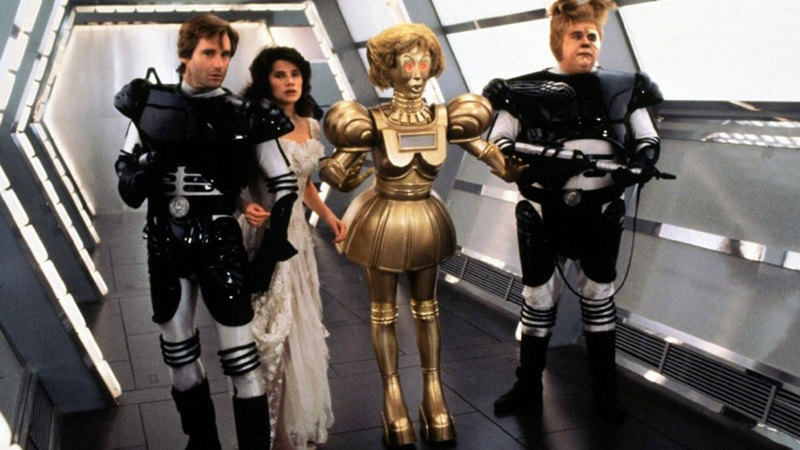Celebrity is the ultimate entitlement.
I know that’s not a revelation, but this new documentary about trend-setting fashion editor Diana Vreeland (1903-1989) is a potent reminder. Vreeland blazed a wide path through the world of 20th century fashion, articulating a clear vision in a loud voice in her tenures at “Harper’s Bazaar” and “Vogue,” both of which happen to be magazines I have never read or even seen anyone else reading. Fashion is an alien concept to me, as anyone who has seen me in my array of four different short-sleeved shirts (Google suggests they might be called “Polos” – I have no idea; they are just shirts) will attest.
“Diana Vreeland: The Eye Has To Travel” (2011) makes it clear even to the completely fashion-illiterate that Mrs. Vreeland was a one-of-a-kind influence as well as a one-of-a-kind personality. Your affinity for that particular kind of personality will determine your perception of both the film and its protagonist. Vreeland believed that people wanted and needed to “invent” themselves and helped others do so while also inventing and re-inventing her public persona. She “lived out loud,” to borrow an annoying phrase, and to her friends and aficionados, she left in her wake an endless series of charming anecdotes, such as the timeshe once shouted out her love for Jack Nicholson in the middle of a “Chinatown” screening or when she stormed to the front of a theater line because, well, Diana Vreeland shouldn’t have to wait in line. “Charming” if you’re a celebrity, “obnoxious pain in the ass” if you’re not.
The Diana Vreeland depicted in the film pretty much stands for everything I don’t believe in. Ok, not quite everything, but even setting aside my fundamental horror at the idea of gleefully “inventing” oneself, there’s a series of Vreeland statements that make me shudder:“Style is everything… without it you’re no one” or “We lead an artificial life.” All of which tap into the same idea and go hand in hand with her tendency to name drop at every possible opportunity. She met just about everyone or at least claimed to, which is the same thing when you’re inventing yourself: Jackie Kennedy, Coco Chanel, Wallis Simpson, Charles Lindbergh, Adolf Hitler. Regarding the latter: “The mustache was unbelievable.”
I’ve focused unduly on the smaller personal details because they are presented en masse in order to create an affectionate portrait of a woman who the filmmakers and interviewees adore unconditionally. The film is primarily a love letter, and even if I can’t share that love, I can still respect it. Pulling back to focus on the bigger picture, it’s easy to understand where the admiration comes from. Vreeland found herself in the heart of both the Roaring ’20s in New York City and the Swinging ’60s in London. On the second front Vreeland proved her vitality and enduring influence as a woman in her sixties who became a mover and shaker in the most-publicized (and mass marketed) youth culture movement of the century. Across several decades, Vreeland did not merely chase what was hip but helped to determine it by turning her pictorial layouts into gripping narratives that captured imaginations around the world and launched a few careers along the way; she proudly cites Lauren Bacall as one of her great discoveries.
Diana Vreeland was, simply put, a real pistol. She was a dynamic interview who never struggled for a clever quip, and the movie relies heavily both on archival footage and recreations of a lengthy series of conversations between her and George Plimpton who helped write her memoir “D.V.” As the film argues convincingly, Vreeland was a success and a charismatic figure to many because she clung to an idiosyncratic point of view that was expressed in everything she did, from editing photoshoots to her late career run as a consultant at the Metropolitan Museum of Art. It’s a point of view that doesn’t resonate with me one tiny bit, but it comes across vividly here.
Video:
The film is presented in its original 1.78:1 aspect ratio. As is the case with manydocumentaries, the image quality varies based on the archival sources, but it’s fairly well-presented overall in this interlaced SD transfer from Entertainment One.
Audio:
Listeners can choose between 2.0 and 5.1 Dolby tracks. There’s no significant difference between them. Most of the dialogue is clearly mixed, though sometimes it helps to rely on the optional English subtitles.
Extras:
The disc includes 44 minutes of additional interviews and a Trailer.
Film Value:
I’ve thought about it for the last week since watching this documentary, and I’m pretty sure there is no subject in the world that interests me less than fashion. However, I won’t hold the filmmakers responsible for that since I’m pretty sure they like the subject a bit more. And they’re not the only ones. Fashion documentaries seem to be arriving on a conveyor belt lately. I don’t know this film compares to the rest of this burgeoning sub-genre, but fans should appreciate this heartfelt ode to a true original.


